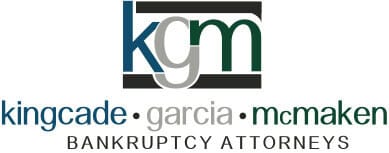Government Mortgage Modifications May Not Be Everything They Seem
To financially distressed homeowners, the federal government’s Home Affordable Modification Plan – HAMP – can sound like a dream come true. The promise of a significantly reduced mortgage, accompanied by considerably lower monthly mortgage payments, raises homeowner hopes. However, recent reports show the program delivering on its promise for only a third of participating homeowners.
An analysis from Amherst Securities reveals HAMP’s success rate: just 32 percent of trial mortgage modifications begun will be converted to permanent modifications without defaults.
In other words, two-thirds of homeowners who enter the program either don’t get a permanent modification or they default on their modified loan.
Problems With the Program
The Financial Times reports that one problem with HAMP is that it doesn’t reduce debt-to-income (DTI) ratios enough. Of the permanent HAMP modifications, the borrower’s DTI (including factors such as mortgages, credit card payments, taxes, insurance, car loans, etc.) dropped from 80 percent to 65 percent. Generally, anything above a 50 percent DTI level is considered unsustainable. (The government requires anyone applying for HAMP with a DTI at 55 percent or above to get credit counseling.)
Another HAMP problem: the principal reduction portion of the plan is voluntary and few lenders are willing to voluntarily reduce principals on houses. The Financial Times speculates that unless this portion of the program is at some point made mandatory – at least for especially distressed homeowners and mortgages – it appears unlikely to do much to stave off a second dip in the housing market and perhaps a second recession as well.
Mortgage Modification can Hurt Credit
The Minneapolis Star Tribune reports that mortgage modifications link to the complex credit reporting system, causing long-term financial damage to homeowners. The credit code used when the three-month HAMP trial modification begins signifies to the credit industry that a borrower is making reduced payments, even if the homeowner isn’t delinquent when beginning the HAMP process.
Many financial professionals tell clients that bankruptcy can be a safer route to fiscal stability than a mortgage modification; The Wall Street Journal points out that some consumers will even see a rise in their credit scores after declaring bankruptcy.
Protecting Assets in Bankruptcy
Consumers saddled with large credit card debts or medical debt often find that Chapter 7 bankruptcy or Chapter 13 bankruptcy provides a way out from under the debt. Florida bankruptcy law provides exemptions for a number of assets, enabling many borrowers deeply in debt to protect the following:
- Their home
- 401k savings
- Pension plans
- Social Security benefits
- Workers’ compensation
- Supplemental Security Income
- Prepaid school tuition
To learn more about whether a mortgage modification is right for you or if bankruptcy might be the better solution, contact a Miami bankruptcy attorney for an assessment of your bankruptcy eligibility.
















